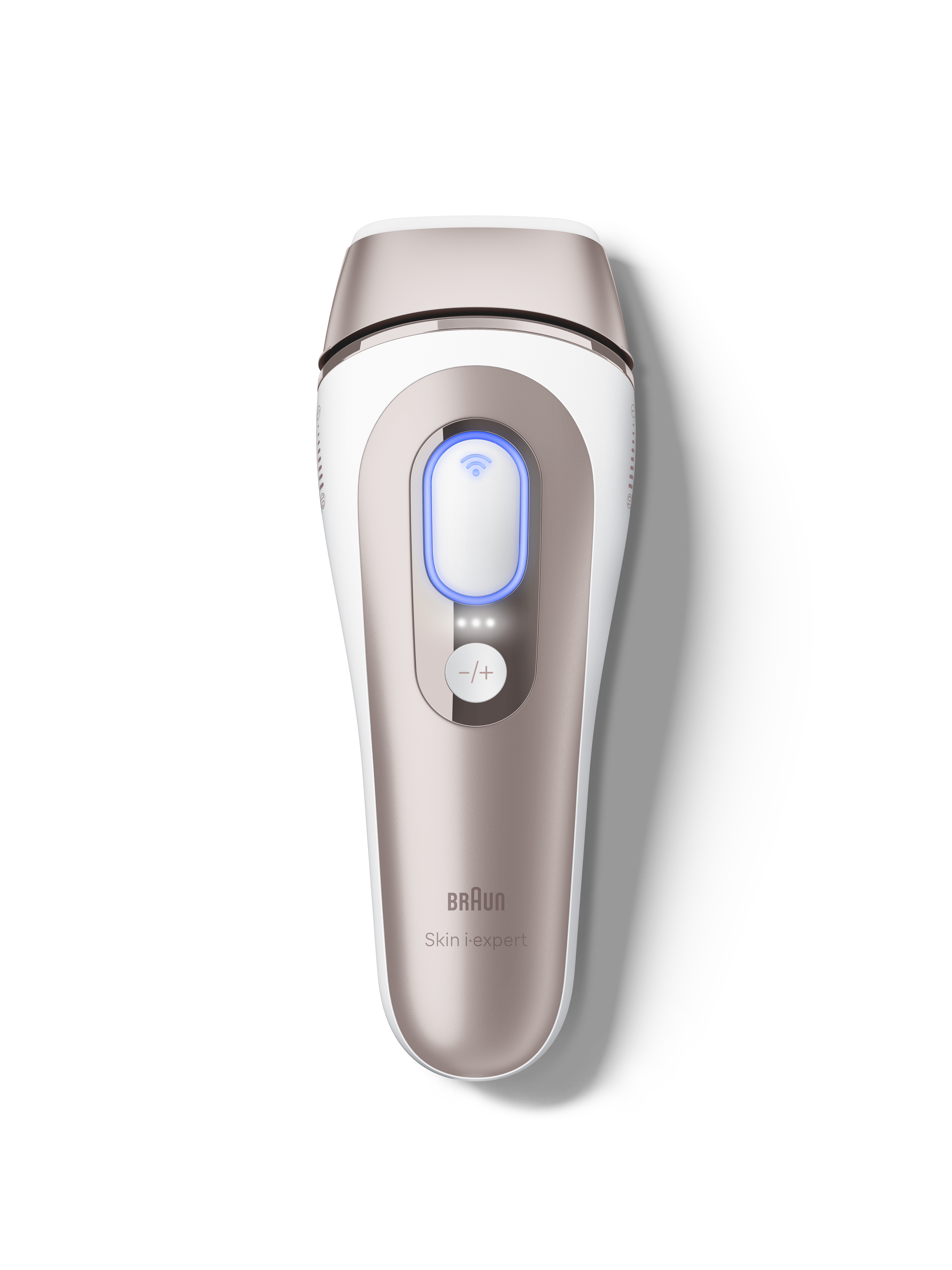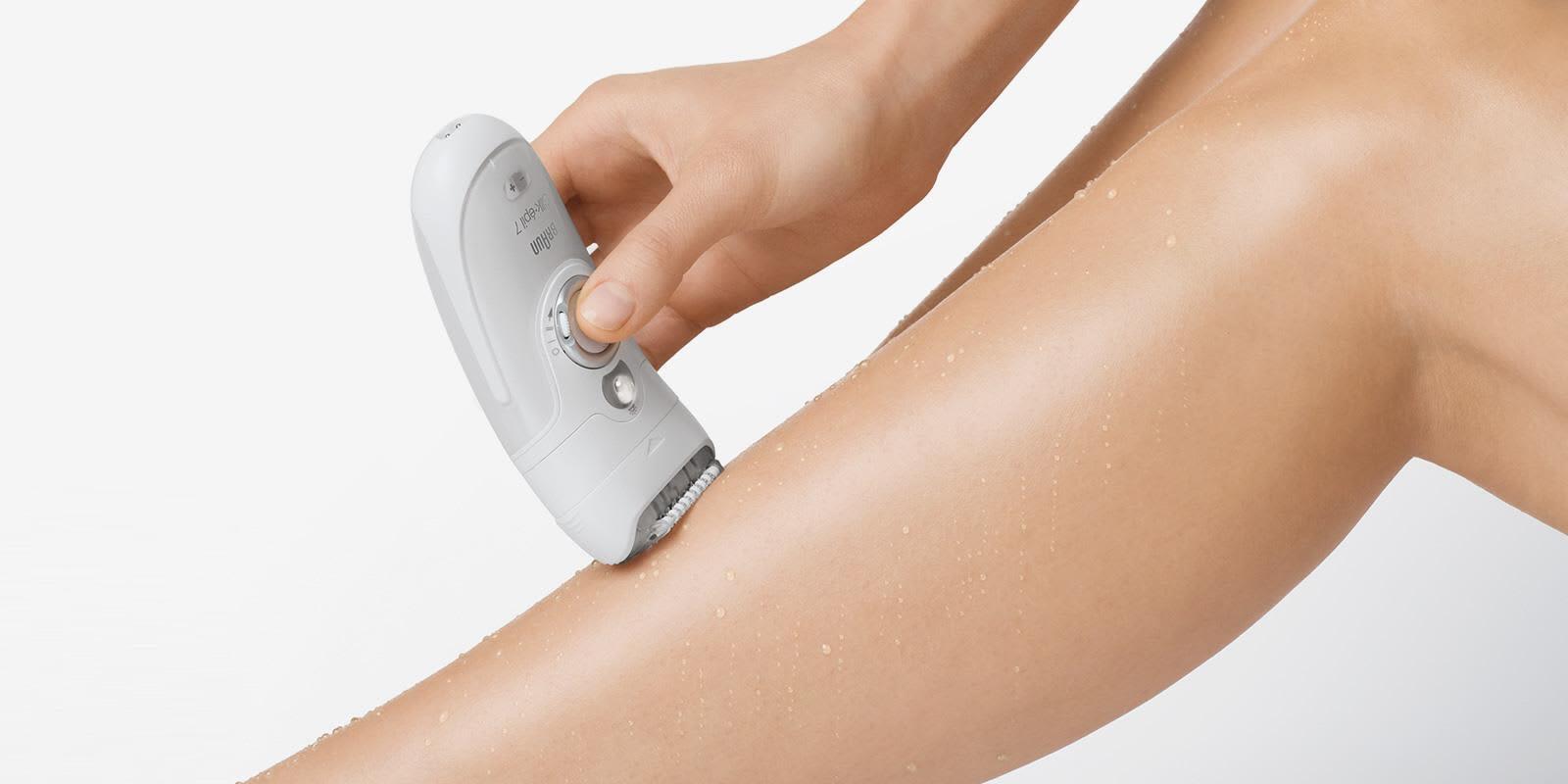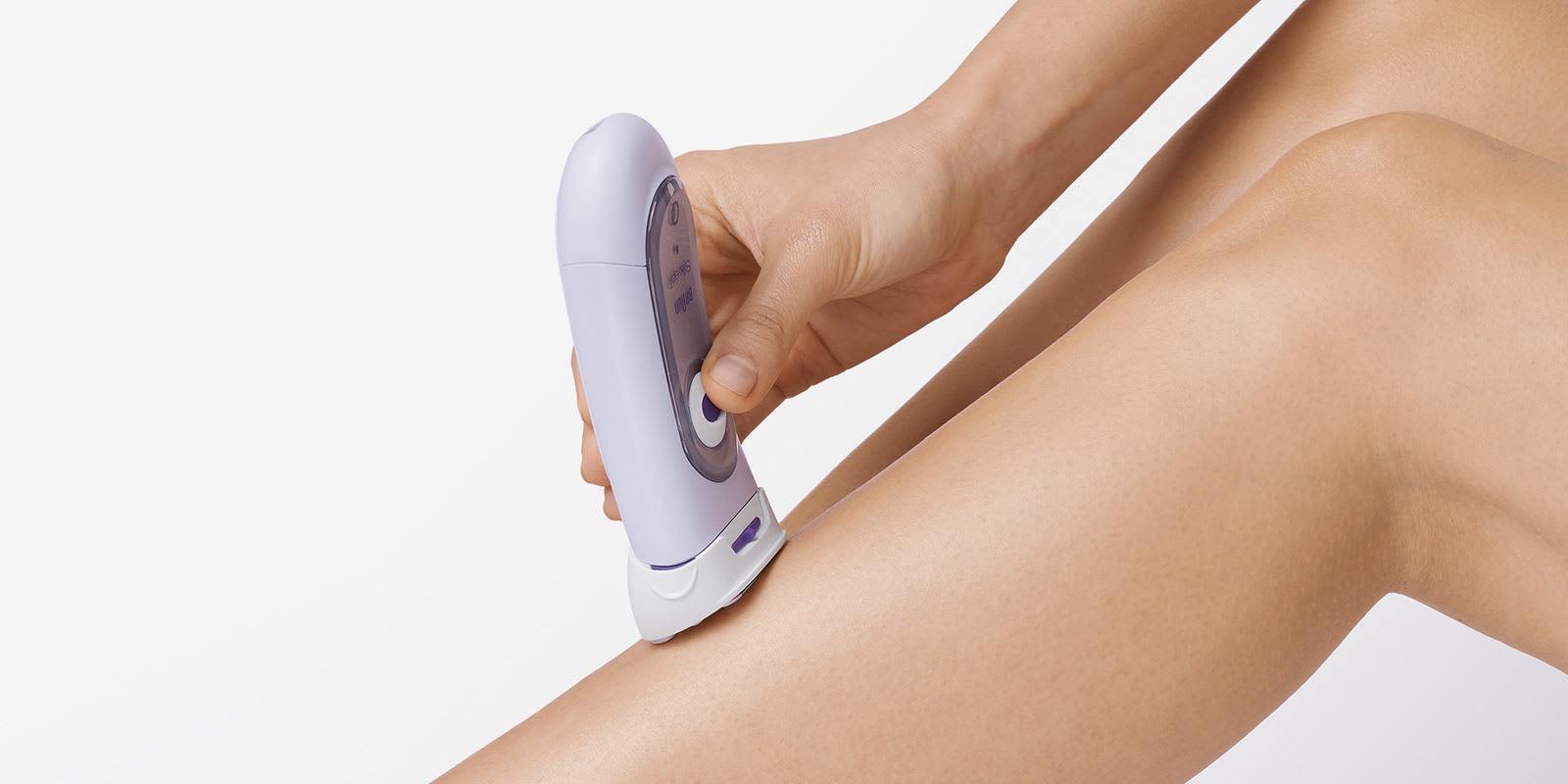Top 7 Forms of Hair Removal for Women

From ancient sugar waxing to modern laser treatments, the quest for silky smooth skin has been a timeless pursuit for women across generations and cultures. Often considered a rite of passage, hair removal can be as varied as the women who use it.
Dive into our guide to the 7 best hair removal methods and find out which technique fits your preferences and lifestyle. Your journey to the flawless, hair-free skin you've always wanted starts here.
Root hair removal methods
In these methods, women remove body hair at the root. It takes weeks for the hair to grow back, and when it does, it's usually softer and thinner than before. The great thing is that with root hair removal, you can enjoy smooth skin for a very long time — up to 4 weeks.
Read on to learn more about the different root hair removal methods and their pros and cons.

The only IPL with an intelligent skin tone sensor
Skin tone varies across your body, so the SensoAdapt™ sensor with UV protection continuously reads the skin tone and adapts the flash intensity for the safe and effective permanent visible hair removal.
Learn more1. Intense Pulsed Light (IPL) methods
IPL is a comparatively new hair removal method. It works with flashes of light that affect the regrowth of body hair. It’s derived from professional methods used by dermatologists. Read on to learn what's special about this method and what you should look out for if you're considering using it
Works by:
Focusing a narrow, concentrated beam of light on small areas of skin. The light is absorbed by the pigments in the hair follicle under the skin surface, heating the hair follicle and disabling hair growth depending on the growth cycle (anagen only). The paler your skin and the darker your hair, the better the treatment works.
Best for:
Bikini, underarms, upper lip, and legs.
Advantages:
Much faster and less painful than it used to be because larger areas of skin can now be treated in one go. In many cases, hair doesn't grow back at all; if it does, it's very fine and thin. With IPL, you can remove unwanted hair from the comfort of your home and treat it as needed without worrying about appointments or additional costs.
Disadvantages:
Requires shaving of the skin before each treatment. The results aren't permanent, so you'll need multiple treatments, which can be expensive if you use IPL in a salon. You also need to be careful about going out in the sun for up to six weeks after treatment, as the pigment changes in your skin can increase the risk of sunburn. Hormonal changes such as pregnancy or menopause can cause hair to grow back.
Beauty rating:
Great for areas that really bother you, like the upper lip, but quite extreme as a regular hair removal option.

2. Epilation
Works by:
Using a handheld device with a head with rotating tweezers that you pass over the surface of your skin, removing hair as you go.
Best for:
All body parts: Legs, underarms, arms, and bikini area.
Advantages:
Ultra-smooth results that last up to four weeks. New models are equipped with an additional attachment that allows you to remove unwanted hair from specific areas, such as the face.
Disadvantages:
It can be uncomfortable in more sensitive areas. Use it in the shower or with water to reduce discomfort.
Beauty rating:
Epilators can remove hair as short as 0.5 mm, unlike wax, which requires a hair length of 2 mm for optimal results — so you don't have to wait for unsightly regrowth.
Dermatologist’s note:
“Because epilating removes hair at the root, the tip of the hair, when it grows back, tends to be more pointed, resulting in a finer appearance. Also, regular epilation can reduce the number of hairs that grow back.”

Choose Silk-épil 9 Flex SkinSpa
Up to 4 weeks of smooth skin anytime, in the comfort of your home.
Learn more3. Waxing
Works by:
Applying hot or cold wax to the skin in the direction of hair growth. Once it has solidified, fabric strips are smoothed on and quickly pulled off against the direction of growth, pulling the hair out with it. An alternative option is prefabricated wax strips.
Best for:
Legs, bikini, eyebrows, underarms and upper lip.
Advantages:
Wax can keep skin hair-free for weeks, so you don't have to think about hair removal for a while.
Disadvantages:
It can be painful. Also, you must wait until the hair is long enough before growing it back. If you want to bare your legs or hate the feeling of hair growing back, this can be a problem. If you do it yourself, it can be messy, and if you go to a salon, it can be expensive. Finally, wax can miss very short hairs.
Beauty rating:
Great if you find daily hair removal a ‘hassle’ – and if you’re prepared to pay for a professional treatment.
Dermatologist’s note:
When you wax, the skin can be left dry afterward. Follow with a soothing lotion, ideally one containing aloe vera.
4. Threading
Works by:
Taking fine pieces of cotton thread and twining the thread around each hair, then pulling the thread quickly apart, removing the hair together with it.
Best for:
Small, delicate areas like eyebrows and upper lip.
Advantages:
Hairs are removed from the root, so regrowth is slow, and hairs don’t grow back prickly.
Disadvantages:
It's a relatively slow process, as the hairs must be pulled out individually. Also, it's a very specialized procedure, so you should go to a well-trained professional.
Beauty rating:
Great for eyebrows — once they try it, most women are converts.
Dermatologist’s note:
“Threading isn't traumatic to the skin, so it's good for particularly sensitive areas like the upper lip or eyebrow.”
Surface hair removal methods
With these methods, you remove the parts of your body hair that have grown above the surface of your skin. It's usually easy, but you must do it often. Read on to learn more about root hair removal methods and the differences.
5. Electric Shaving
Works by:
Passing a small electric device with a fine screen at one end across the skin's surface, trapping the hair. The blades move sideways and cut the hairs at the edge of the screen.
Best for:
Legs, bikini area, underarms
Advantages:
Quick, safe, and because you do it "dry," you can easily do it on the go. It's also a good option for people with very sensitive skin.
Disadvantages:
The "hairless" effect doesn't last quite as long as with wet shaving. Also, the razor needs to be well taken care of, which means cleaning it regularly and changing the blade annually.
Beauty rating:
Great as a gentle and quick hair removal method.
Dermatologist’s note:
"This convenient hair removal method is gentle enough to suit most people. However, don't use it if your skin is irritated by cuts or rashes."

6. Wet shaving
Works by:
Gliding blades over damp skin to cut the hair on the surface.
Best for:
Legs, underarms, bikini area
Advantages:
Fast, effective, and painless. Also, gently exfoliates dry, flaky skin on the legs to keep them extra smooth.
Disadvantages:
While shaving provides nice, smooth skin, you'll need to repeat it regularly to maintain the smooth result.
Beauty rating:
A great option for busy women.
Dermatologist’s note:
“Shaving is a convenient option — but it's important to do it right. Simply using soap and water isn't ideal, as it often leaves skin looking dry and flaky. It's better to use a moisturizing shaving gel.”
7. Depilatory Creams
Works by:
Chemically dissolving the hair on the surface of the skin. After application, the cream remains on the skin for up to 10 minutes and is removed by gently rubbing the hair.
Best for:
Upper lip, bikini area and underarms
Advantages:
Painless, inexpensive
Disadvantages:
It can sometimes be messy and difficult to apply. Traditionally, products have an unpleasant odor, although some are better than others. Skin irritation can also be a problem, so do a patch test 24 hours before applying.
Beauty rating:
Best for small areas like the face and underarms.
Dermatologist’s note:
“If you have sensitive skin, depilatory creams may not be the best choice, as their chemicals can cause irritation and allergic reactions. Always do a patch test, preferably on the inside of your arm and better yet on two separate occasions, before using it on an entire leg or face.”
Conclusion
The quest for hairless, soft skin is a constant in the ever-evolving world of beauty. As we've journeyed through the various methods – from the ancient threading technique to the most advanced IPL treatments – we've found no one-size-fits-all formula.
Which hair removal method is best for you depends on your individual pain threshold, skin sensitivity, budget, and desired longevity of results. Some methods provide instant smoothness, while others offer long-lasting results with minimal maintenance.
As you embark on your hair removal journey, remember: it's not just about the destination but the journey itself. Here's to finding your perfect solution!